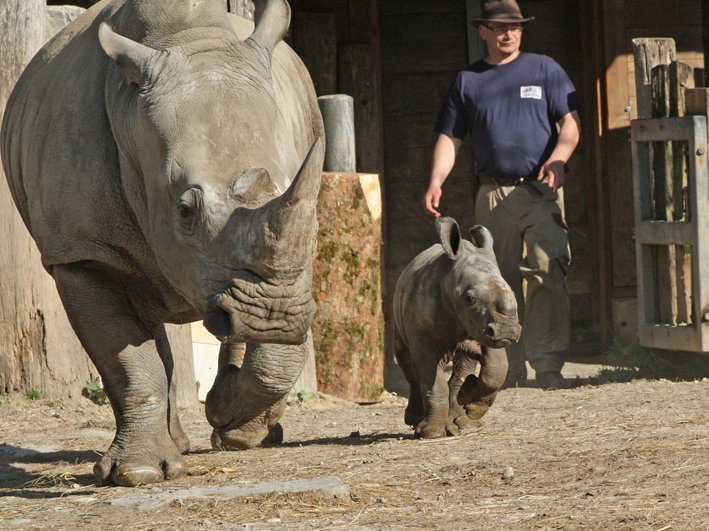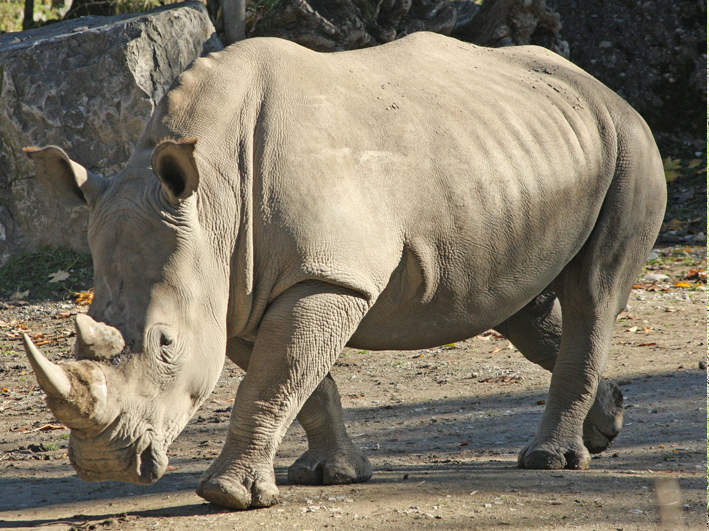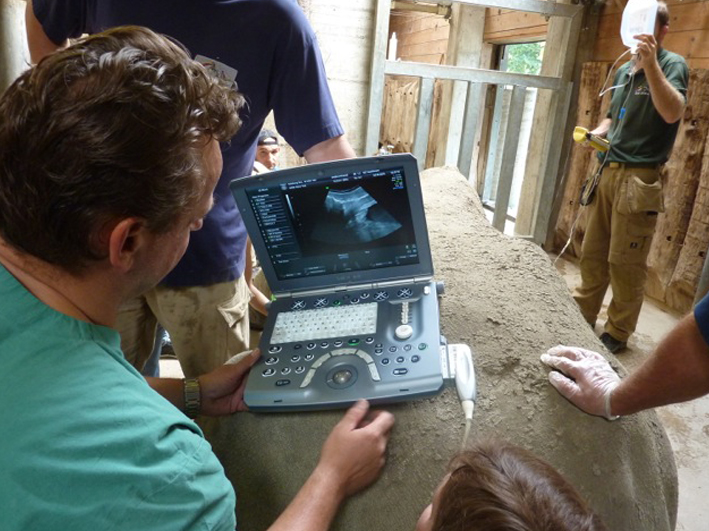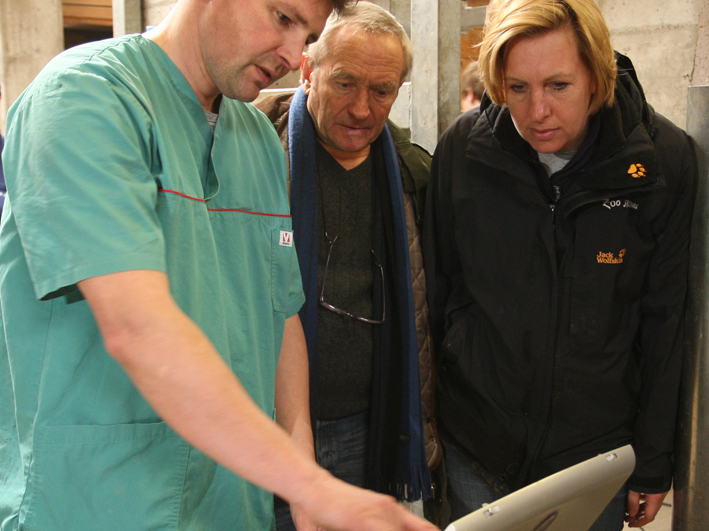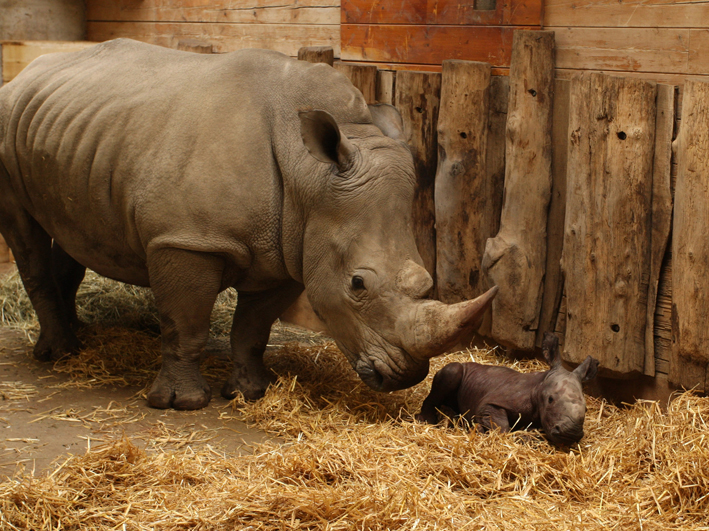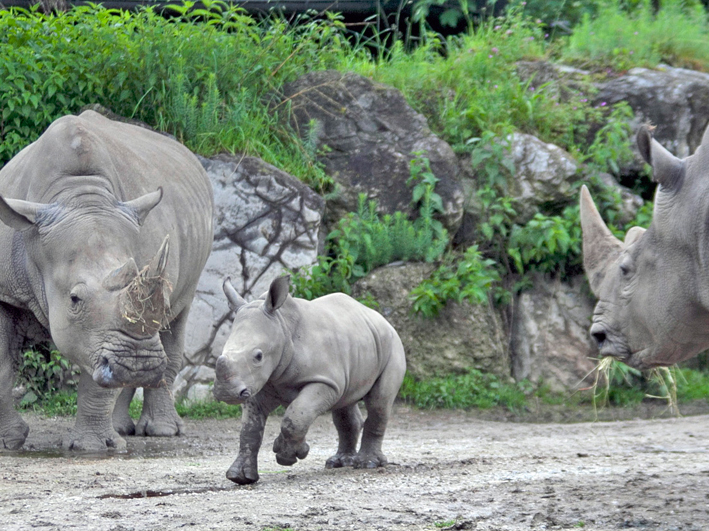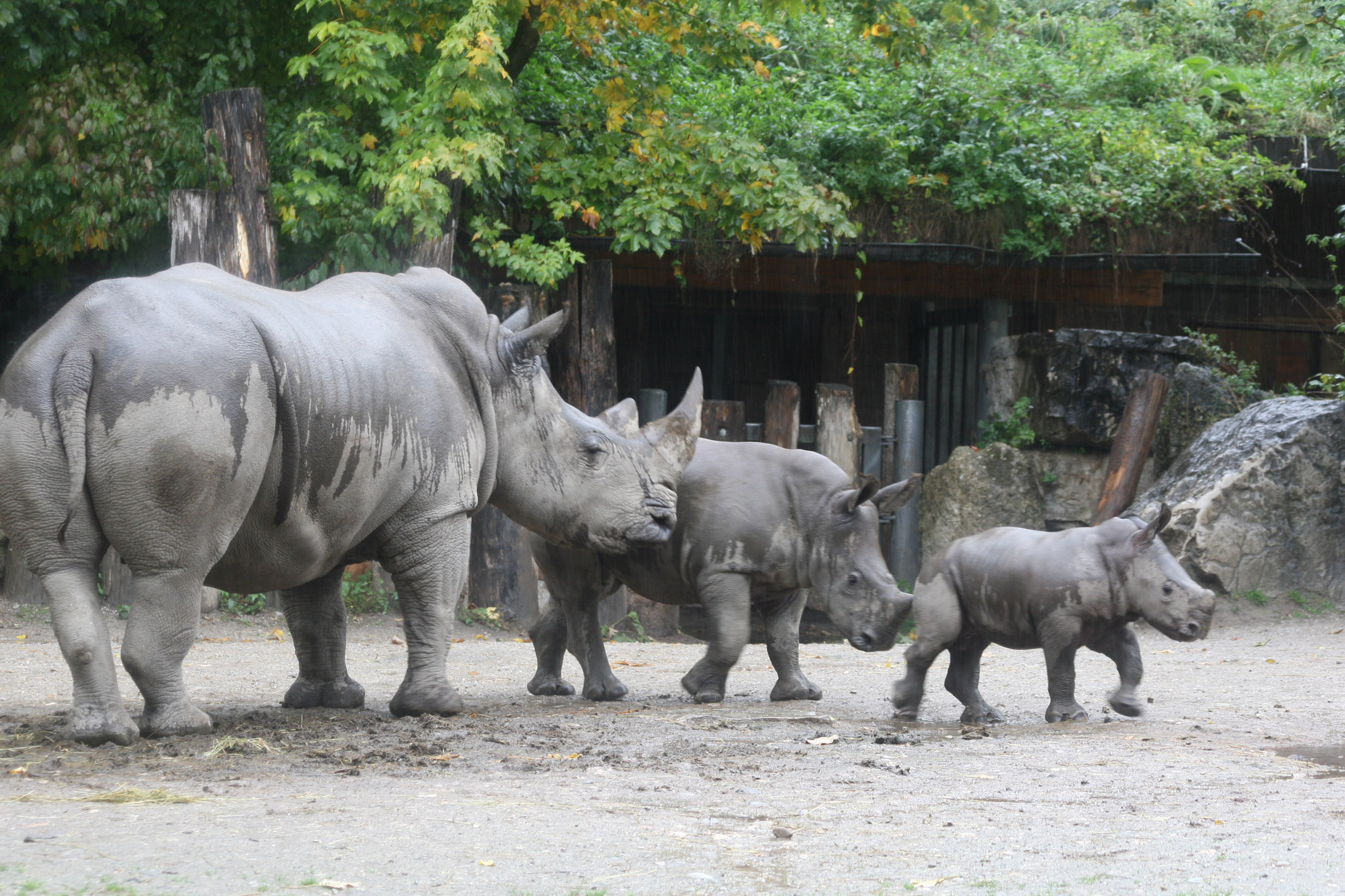Rhinos in Danger
The Academy’s Engagement for the Salzburg Zoo is Part of a Pan-European Species Conservation Project
The survival of five rhino species in the wilderness is seriously endangered: At the beginning of the 20th century, Africa and Asia counted about 500.000 living rhinos in the wild. As of today their number has shrunk to just just a few thousand animals worldwide and is continuing to decline. Illegal poaching represents an extreme danger to the rhinos, bringing them close to the edge of extinction.
A passionate veterinarian, Henning Wiesner considers the protection of endangered species to be mandatory: The animals must not be threatened by neither thoughtless actions nor the lack of foresight. So he shares with the Salzburg Zoo in a very special way the experience he collected during 40 years as managing director of the Munich Tierpark Hellabrunn: As chairman of the Academy, he advises the Salzburg Zoo in all scientific, zoological and veterinary matters. An arrangement very much appreciated by Salzburg as well as the Academy, since all revenue generated will fully benefit the Academy’s projects and therefore zoo animals and wildlife all over the world. With the help of Dr. Wiesner, Salzburg already experienced a small miracle: During the 2015 Easter holidays baby rhino „Amadou“ was born in the Salzburg Zoo, followed by a second baby rhino, „Tayo“, in September of the same year.
In Salzburg hopes for rhino offspring had proven futile for a long time, since rhino bull Athos showed not the faintest interest in his female companions. Henning Wiesner recommended artificial insemination, which initially was not successful either. Eventually he promoted long year contacts to the IZW Leibniz-Institut für Zoo- und Wildtierforschung in Berlin, where an experienced team, led by Prof. Dr. Thomas Hildebrandt, Dr. Frank Göritz and Dr. Robert Hermes, is specialised in this subject matter. Now both new calves are developing very well, they already have become the favourite attraction for zoo visitors.
The Academy now also supports the rhinos‘ in-vitro fertilisa-tion in the Salzburg Zoo by the IZW: This involves artificial insemination, which in the case of rhinos is still in its beginning stages, but in the long run will probably prove to be the only chance to keep some subspecies from extinction and eventually preserve their biodiversity. In Salzburg Zoo the IZW team with Prof. Dr. Henning Wiesner was able to achieve great progress.With the help of designed special devices, the IZW succeeded to detect individual follicles in the ovaries of the 33-year-old female white rhino Kifaru. The next step will be to stimulate the growth of follicles and eggs, e.g. with phytomedical methods, supplied and financed by the Academy. Sabine Grebner, the Salzburg Zoo’s general manager: „I am very proud and happy to be able to work with such a great team. Thank you very much for the outstanding cooperation.” ■



